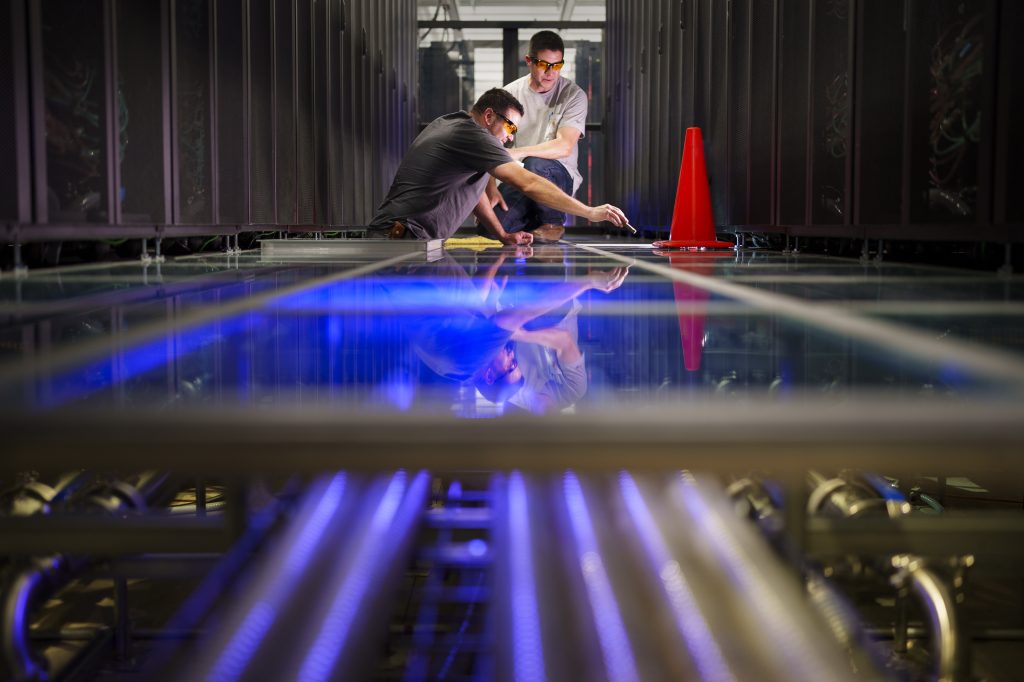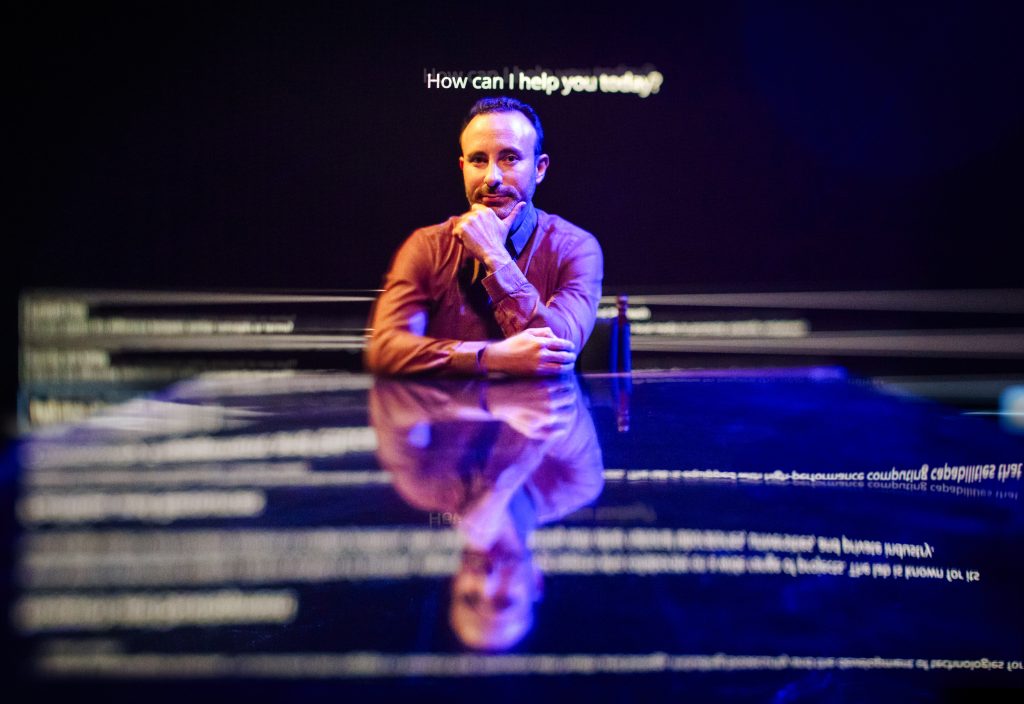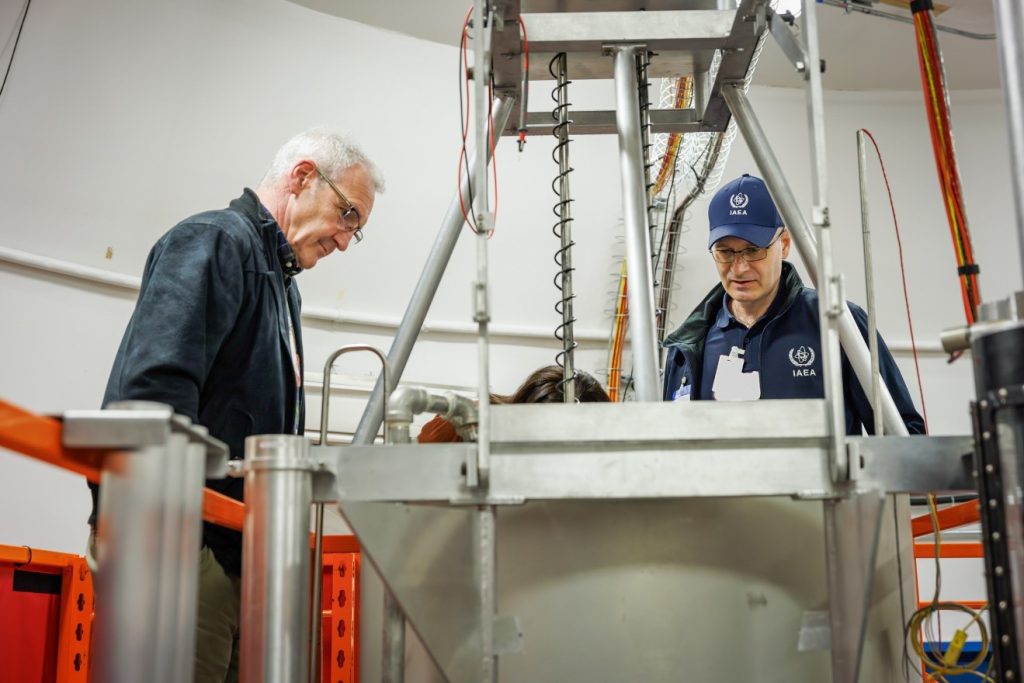
Flight of new computer systems
This year, the high-performance computing team launched four powerful new clusters: Amber, Stout, Flight and Hops. These systems enhance computing capabilities for the nuclear deterrence and artificial intelligence programs. Together, they deliver over 30 petaflops of computing power, significantly boosting mission delivery and time to solution. With these innovations, Sandia is better equipped to tackle critical computing challenges and drive progress in national security and scientific research. • 9000

ePDM hosts shared data, processes across enterprise
The Product Realization Integrated Digital Enterprise program launched the classified Enterprise Product Data Management system, which serves as the backbone for enterprise digital engineering across the nuclear security enterprise. This common repository provides all sites a single source of truth for design definition. It facilitates standardized configuration and change management processes, improving the ability to manage product lifecycles and adapt to evolving project requirements. Additionally, ePDM establishes streamlined workflows for approval, release and access to baseline product definitions, enhancing collaboration and efficiency across the enterprise. • ESD, 2000, 9000
IT staves off CrowdStrike meltdown
When a faulty CrowdStrike update created worldwide bluescreens on a Friday in July, Sandia IT convened a team to fix 16,000 computers, hands on, one at a time. Experts created USB sticks that automated the solution as much as possible, including a way to fix unattended, encrypted computers. Volunteers staffed walk-in popup help stations — where hundreds of Sandians trucked in computers and servers — and fixed unattended on-site computers by traveling office-to-office. By the following Monday, IT reported about 60% recovery, a team effort that helped Sandia avoid the CrowdStrike meltdown. • 9000
Increased connectivity options in VTRs
Sandia has successfully introduced approved unclassified Wi-Fi in a designated building housing Vault-Type Rooms, a move designed to meet evolving technology and mission needs. Previously, Wi-Fi was restricted in these rooms despite its availability elsewhere around the Labs. Benefits include enhanced efficiency through paperless operations, reduced documentation errors, improved information security and streamlined access to operational tools. Plans are in the works to expand Wi-Fi access throughout other VTR spaces, paving the way for modern solutions and innovations in future upgrades. • 9000

First internal AI chat in the enterprise
In response to a challenge by Sandia leadership, IT developed the first AI chat tool in the nuclear security enterprise. Developers selected a Microsoft AI platform and, with input from experts in information security, ethics, legal, cybersecurity and research integrity, built a tool with robust guardrails that ensure prompts and responses never leave the confines of Sandia information protection. AI chat already is widely used across all job categories. Future versions will include image-generating tools and the ability to analyze internal Sandia data. • ESD, 9000, 11000

International Atomic Energy Agency visits the Labs
In partnership with DOE, NNSA and the Sandia Field Office, Sandia’s Security program hosted the 103rd International Physical Protection Advisory Service mission in New Mexico. Conducted by an International Atomic Energy Agency team with experts from eight countries, the mission was the second-ever in the U.S. since the program began in 1995. These missions are intended to help countries strengthen their national nuclear security regimes by observing U.S. physical protection of nuclear material and facilities, comparing it with international good practices and making recommendations. As part of a larger U.S. assessment, the advisory team reviewed security systems and measures implemented at the Albuquerque site and identified two good practices. • 6000, 9000

Thermotron Walk-in Chamber project
In partnership with mission organizations, the Security program requested and was granted approval from the NNSA Sandia Field Office to apply a customized set of physical security enhancements at Sandia’s Thermotron Walk-in Chamber, equipping it for long-term classified model testing. The Thermotron is a climatic chamber capable of creating and maintaining extreme temperature and humidity conditions, allowing researchers to perform full-scale product response analysis of individual components, subsystems and full systems in real-world exposure scenarios over time. The modifications significantly expanded the types of work the chamber can support, freeing personnel time to focus on other mission activities. • 9000